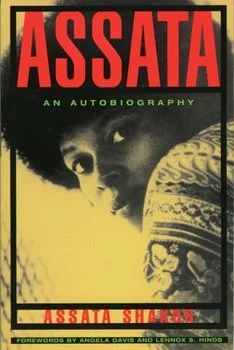Assata Shakur’s Early Life: A lesson plan for 10-14 year olds
Some years ago, for the Omega Dr. Carter G. Woodson program, organized by the Iota Phi Chapter of Omega Psi Phi Fraternity, I taught a couple of lessons on Assata Shakur as part of a course on Black nationalism. In honor of Sis Assata’s recent passing, light to her spirit, I want to share a couple of these lesson plans that people can use with in schools, out-of-school-time programs, families, or for the youth section of a larger event. The lessons include images that can be seen using the links below. I will post the second lesson next week. This lesson is based on chapter 2 of “Assata: An Autobiography” by Assata Shakur
Age Group: 10-14
Key Big Ideas: Miseducation, class struggle in the family, resisting White supremacy
Learning Objectives: To learn the name, Assata Shakur; that grew up in both North Carolina and New York; she resisted classism; and still struggled with her own internal colonialism.
Key Information:
Assata was born on July 16, 1947, in New York City.
Her parents divorced soon after she was born, and she moved to North Carolina when she was three, where she lived with her grandparents.
Assata resisted segregation, as seen in the story of she wouldn’t accept that she would go without a picture of Elvis Presley just because there were none in the “colored” section of the store. Assata is also showing us how internalized colonialism looks.
Assata’s grandmother taught her never to say “yes ma’am” or “yes sir” to White people and to look them in the eye.
Activities: (supporting images)
Write both “Assata Shakur” and “JoAnn Chesimard” on the board or give it to each child on paper and ask them to try to pronounce it. (5 min)
Talk with children about the idea of revolution and see their understanding of the term. Emphasize that it is to remove a set of people who are governing a country and replace them with another set. Explain that we will be learning about Assata as a Black revolutionary, meaning she wanted to see Black people govern ourselves. Ask children what they think about this idea (10-15 min)
Present New York City, Queens, specifically, and Wilmington, NC, on a map. Show pictures of those two areas from the 1940s, 50s, and 60s. Show signs of segregation. (10 min)
Tell the story of how Assata went into the White section of the store to get a picture of Elvis Presley. Show how Elvis Presley learned everything from Black people, and then ask how they feel about his statement that Black people are only good for buying his records and shining his shoes. Reflect on both her courage and her miseducation since and how she later hid the image. (10 min)
Tell story of Assata’s grandmother telling her never to “yes ma’am” White people. How do they feel when talking to White people? (10 min)
Close: What did we learn today? (5 min)
Assessment
What portion of the class spoke?
Did anything that was said surprise you?
Ask children to repeat back geographic locations
